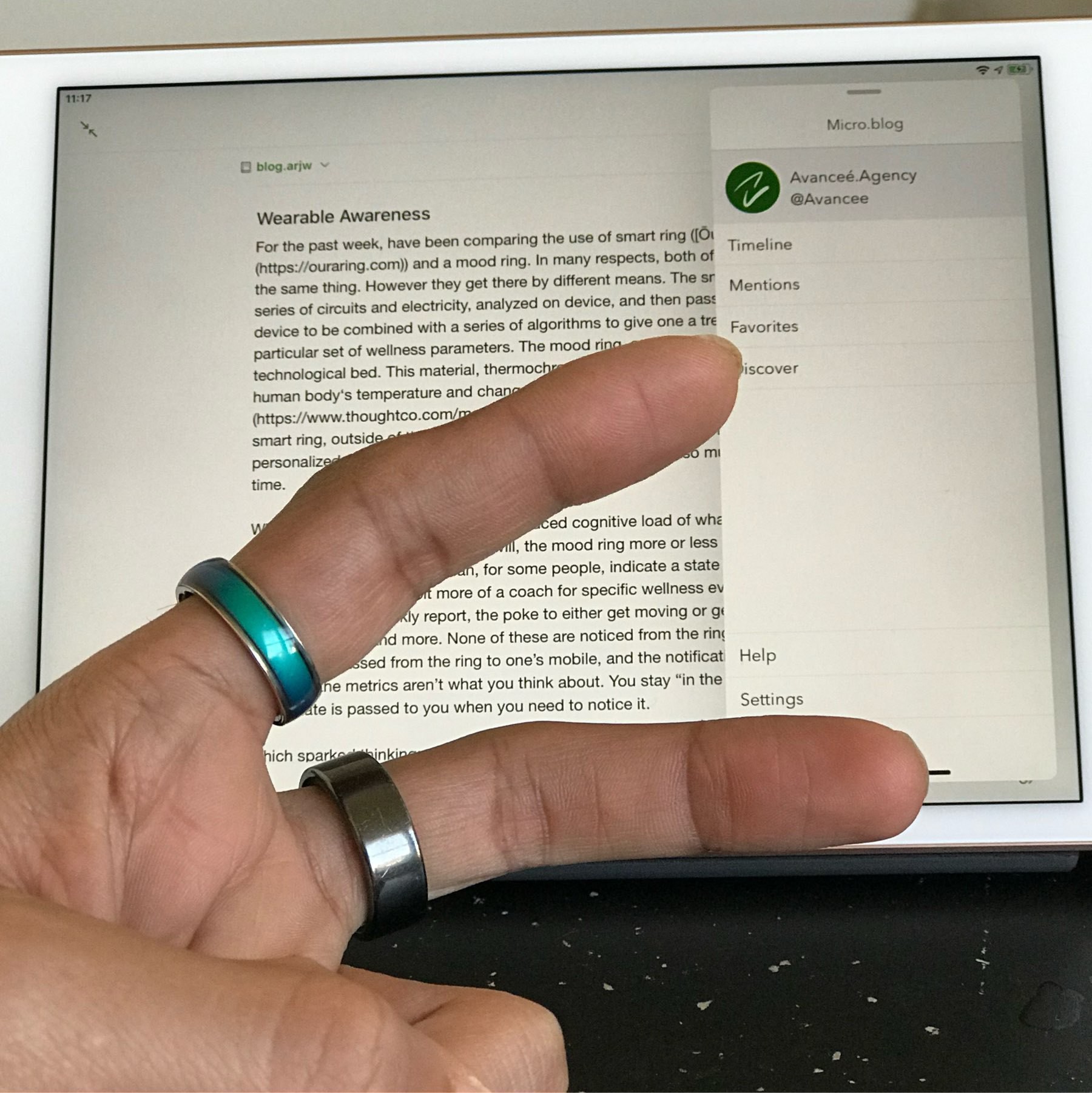Wearable Awareness

For the past week, have been comparing the use of smart ring (Ōura) and a mood ring. In many respects, both of these devices do the same thing. However they get there by different means. The smart ring is a series of circuits and electricity, analyzed on device, and then passed to another device to be combined with a series of algorithms to give one a trend map of a particular set of wellness parameters. The mood ring, on the other hand, uses a less technological bed. This material, thermochromatic crystals, interacts with the human body‘s temperature and changes color based on it. It is calibrated, like the smart ring, outside of the wearer’s view. But, the meaning it gives the wearer is personalized all the same. Fewer wellness parameters, but also much more real-time.
What’s most interesting so far is the reduced cognitive load of what a measurement might mean between them. If you will, the mood ring more or less expresses your body temperature (and that can, for some people, indicate a state or being). Ōura, on the other hand, is a bit more of a coach for specific wellness events. There’s the sleep report, the weekly report, the poke to either get moving or get ready for bed, the activity goal, and more. None of these are noticed from the ring itself. This information passed from the ring to one’s mobile, and the notification from there. For both, the metrics aren’t what you think about. You stay “in the moment” and the ring’s state is passed to you when you need to notice it.
Which sparked thinking: why wouldn’t a connected ring, like the Ōura, also use the same thermochromatic crystals as a mood ring? The thinking here is that even though thermochromatic crystals are not an accurate indicator of emotional status, the correlation to body temperature could be combined with the active coaching have a connected ring in order to be more present wellness advocate for the wearer. Over time, the wearer wouldn’t just look at the prompts and stats from the networked intelligence of the connected ring to understand their present psychological condition, but also use the transformative appearance of the ring to “adjust their frequency” to stimuli in real time.
For now, am just wearing both on the same hand. And when the mobile is near, am able to make some inferences between the data provided by Ōura and the “in the moment” state of the mood ring. Perhaps, there’s already been an exploration of this kind of dual-signaling and am just on the latter side of what works alongside the other physics caused by batteries, processors, etc. Or, maybe the connection we have to various elements is a route to explore with wearables. A route knitting us closer to not just understanding our own state of being, but how that state is probably much more aligned to unique elements in the organic world around us.
Bonus Bits
Came across this via a friend:
The short-term goal, Mason said, is for UCSF and San Francisco General emergency room doctors and nurses to get a heads-up of a fever or impending illness, not just COVID-19, so they stay home or get treated. Already taxed front-line medical workers can little afford to spread illness among themselves, she said.
The long-term goal is to collect as much data of healthy and COVID-positive patients who wore the ring and determine common bio-marker activity that precipitated symptoms, such as heightened temperature or breathing patterns. Whether they will be able to differentiate the common flu from COVID-19 is unclear.
If you are interested in assiting this work and have an Oura ring, read more and signup here.
Not reading into this too much, but it seems like am already on the right path. And maybe, just a little bit ahead of where some aspects of self diagnosis may be able to help an even larger problem.